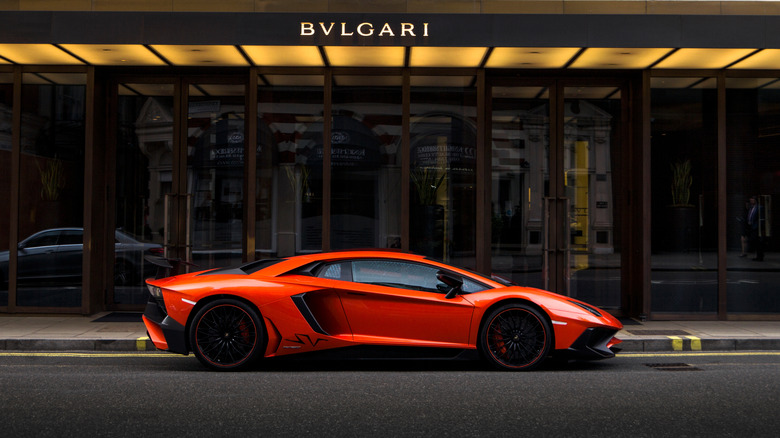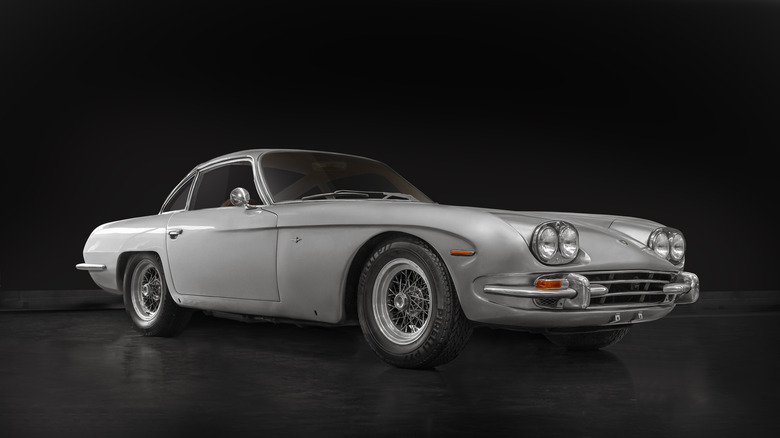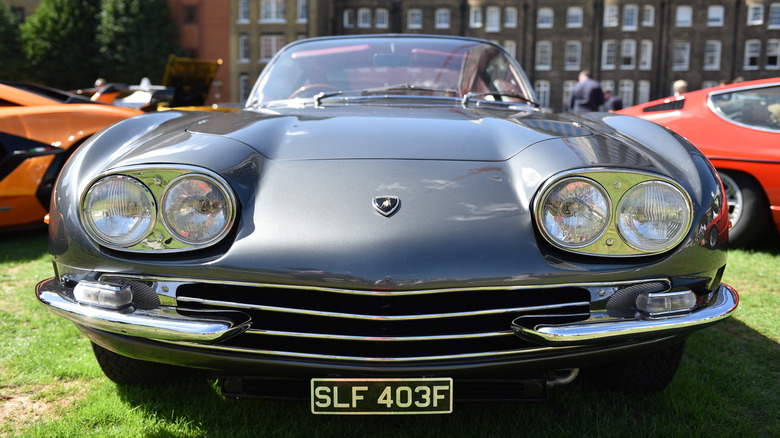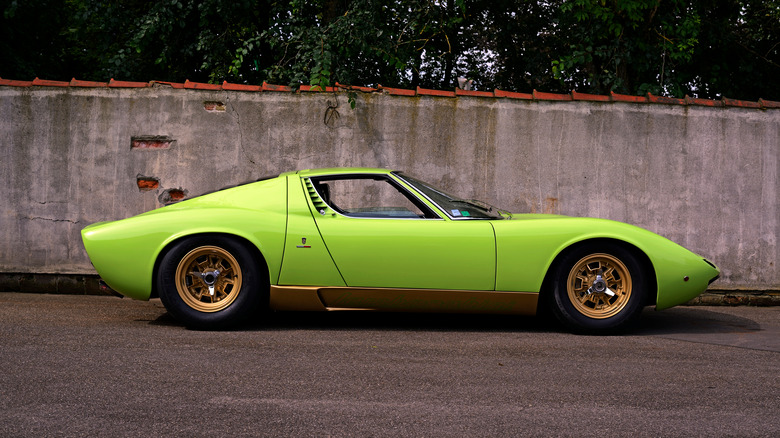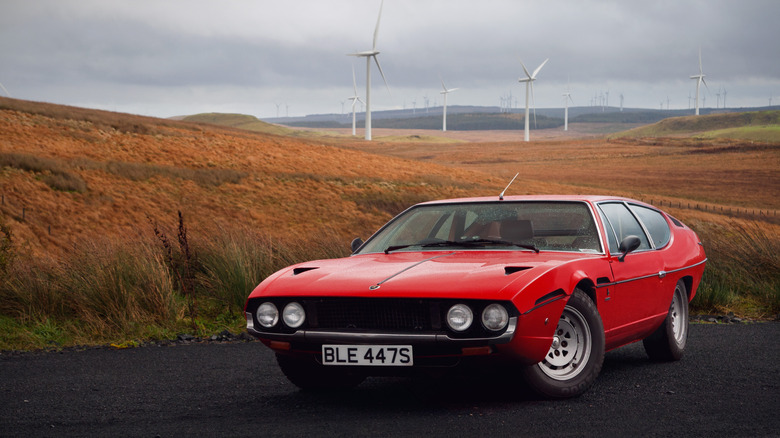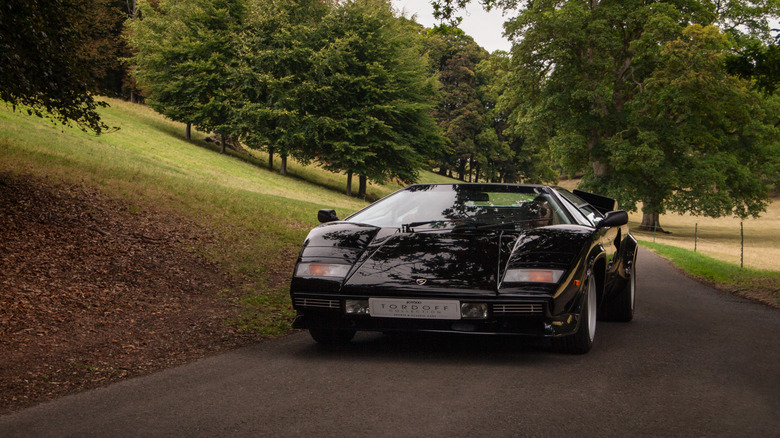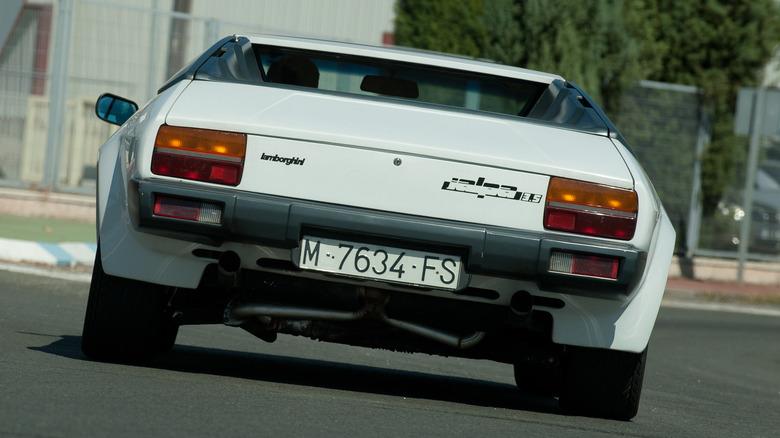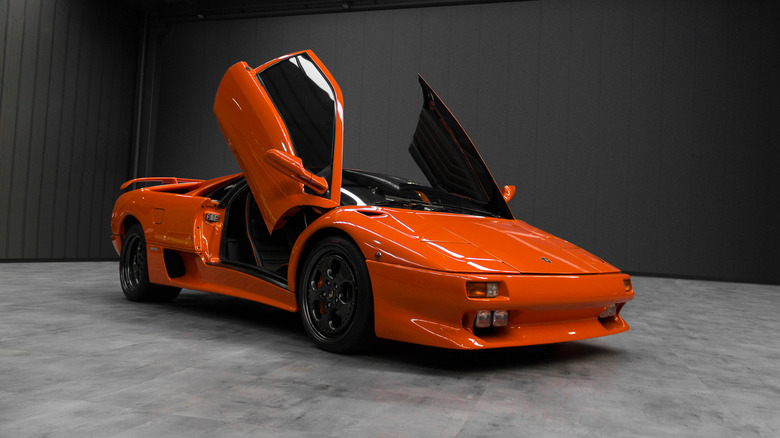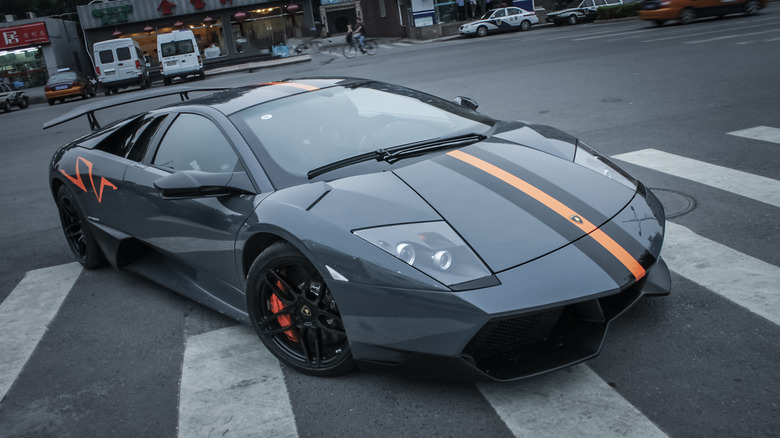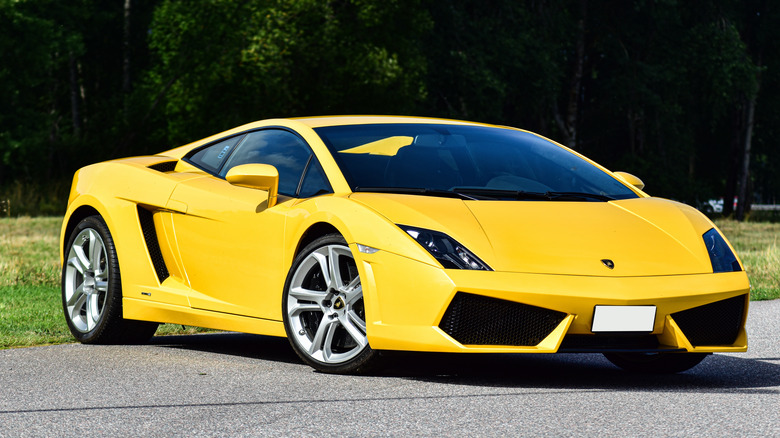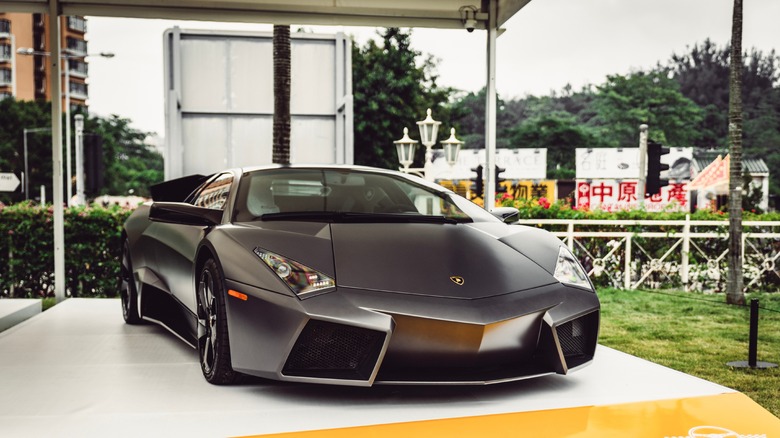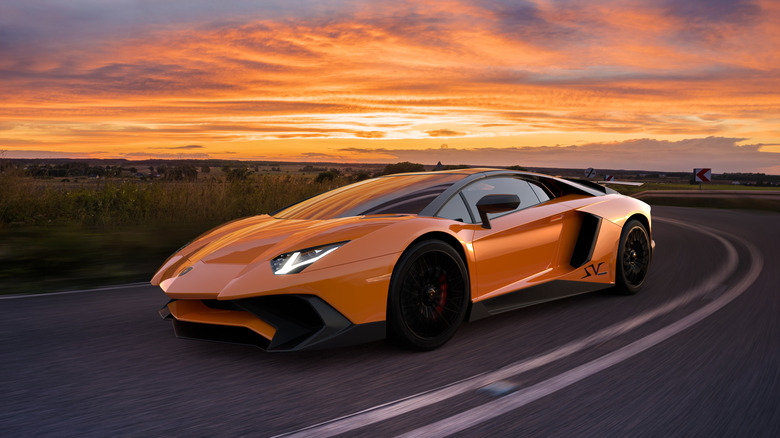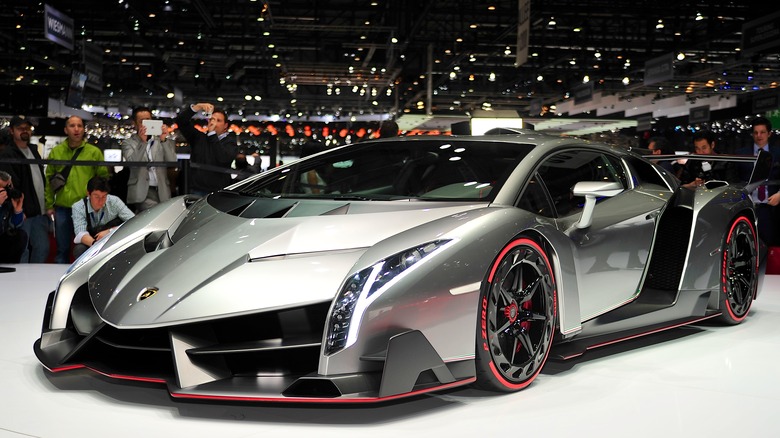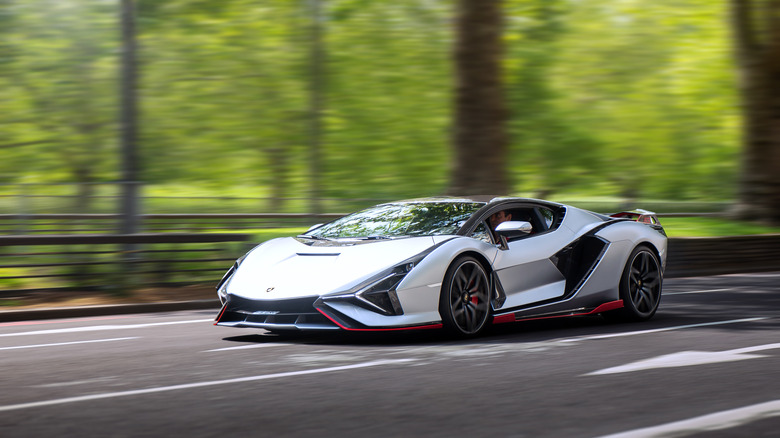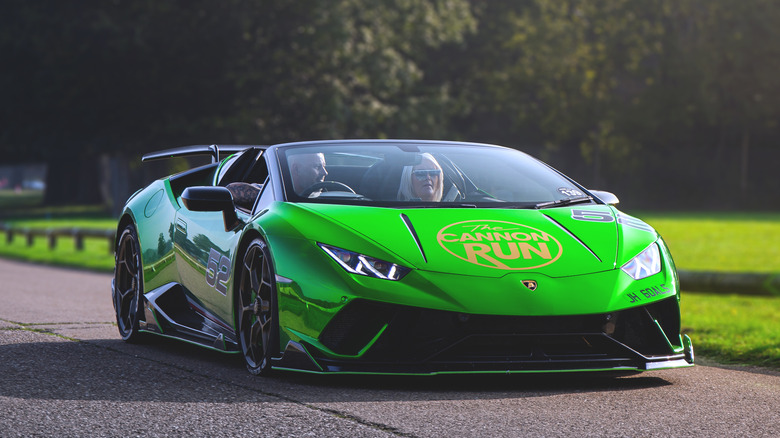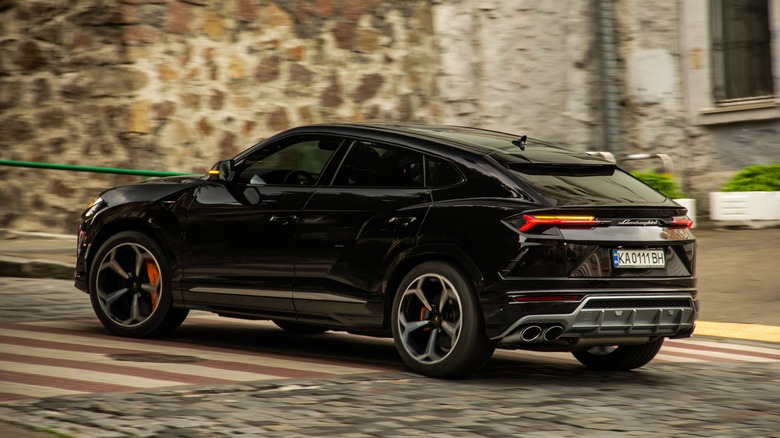15 Best Lamborghinis Of All Time
Since its inception in 1963, Italian sports car manufacturer Lamborghini has evolved to become one of the most renowned automobile brands all around the world. Today, Lamborghini is a hallmark of successful fast cars with a highly-appreciated portfolio of sports cars, an SUV, and some amazing concept vehicles.
Lamborghini was founded by manufacturing tycoon Ferruccio Lamborghini with the sole intention of producing high-performance grand-touring sedans that could stack up against the cars from the rival brand Ferrari. during the first 10 years, Lamborghini grew quickly with the introduction of its mid-engine rear-wheel-drive sports cars that managed to win the hearts of enthusiasts. Although eventually, the finances of the company started trembling, especially during the 1973 oil crisis.
Post-1973, the company's ownership changed quite a few times, including the American company Chrisler Corporation taking charge in the '80s. Today, the Italian sports icon is owned by VW Group through Audi's subsidiary, and looking back at all those years of existence, Lamborghini undoubtedly has produced some of the best sports cars the world has ever seen.
Lamborghini 350 GT
One of the earliest cars developed by the Italian major, the Lamborghini 350 GT was the first production car model produced between 1964 and 1966 (via Lambo Cars). Unveiled at the Geneva Auto Show as a grand tourer model, Lamborghini's success in terms of both brand establishment and economic stability came after the introduction of the 350 GT. Back then, Lamborghini intended to build a car that could rival the big stature of Ferrari and the 350 GT was audacious enough to do so.
During the early days, lead engineer Giotto Bizzarni developed the first V12 engine for the company. The same engine was used to build the 350 GTV prototype model that eventually became the canvas for the street-fit 350 GT. In order to do so, several changes were ordered, both to the exterior body of the prototype as well as the powerhouse. For starters, the original engine from the prototype which was more inclined towards racing was toned down for a smoother and more comfortable city drive.
The body was redesigned by the famous Italian automobile company Carrozzeria Touring but retained the basic profile of the prototype. This also included the ditching of rotating headlights and fixed headlamps were equipped instead. The production model of the 350 GT carried the detuned 3.5L V12 engine and could produce 280 horsepower along with 240 lb-ft of peak torque output. Acceleration from 0-60 mph took 6.8 seconds and the car could hit the top speed of 158 mph.
Lamborghini 400 GT
The Lamborghini 400 GT was a two-door grand tourer produced by the Italian company between 1966-1968. As the name suggests, it was the successor to Lamborghini's first production car, the 350 GT, carrying body modifications and a reworked power source. Commercially, the car was produced over two series. The first lot called the 400 GT Interim was carried the enlarged version of the 350 GT's V12 engine. With a displacement unit of 4.0L, the V12 could pump out a solid 320 horsepower at 6,500 rpm. Only 24 such 400 GT models were ever made.
Moving forward, Lamborghini unveiled the second lot of 400 GT cars at the Geneva Auto Show and named it the 400 GT 2+2. As the suffix signifies, this edition of the Lamborghini 400 GT featured a rear seating setup as well, allowing four people to comfortably travel at a time. Unlike the 400 GT Interim, the 2+2 model had a larger body, a slightly different roofline, and differently-shaped headlights. A total of 224 units of the 400 GT 2+2 were produced during the manufacturing tenure before being replaced by the successive model Lamborghini Islero.
Lamborghini Miura
The iconic Lamborghini Miura was originally envisioned by the company's engineering team members who worked on the project in their spare time. Interestingly, the founder of the company was against such projects he preferred powerful yet comfortable grand-touring vehicles unlike the rival Ferrari and Miura was a designated sports car. It was designed to perform and win on race tracks while being an enthusiast's car one could easily drive on the road. Comfort? not so much.
The prototype model of the Lamborghini Miura which was then called the P400 was developed by the top engineer from the company and when shown to Lamborghini's executives, the project was given a green light since they were convinced that production of such a vehicle will not be too expensive.
The road-legal model of the Lamborghini Miura was powered by a 3.9L V12 engine co-shared by the Lamborghini 400 GT at the time. The transversally-mounted engine could produce 430 horsepower and was further paired with a five-speed manual gearbox (via Motor Trend).
Lamborghini Espada
Produced over a production period of 10 years, Lamborghini Espada went on to become the best-selling Lamborghini from 1968 to 1978 (via Lambo Cars). The Espada was a two-door four-seater GT designed by Marcello Gandini at Bertone and was sold alongside Lamborghini Islero. Espada marked the decline of front-engine V12 setup in Lamborghini cars while succeeding the 350 GT and 400 GT.
Throughout its production tenure, Lamborghini Espada was available in three different series and each series featured time-to-time interior redesigns and some mechanical upgrades as well. The powerhouse of the car and the exterior body design remained significantly unchanged throughout. The first generation of the Espada, called the Series-1, was introduced in 1968 at the Geneva Motor Show alongside its counterpart Lamborghini Islero. Series-1 equipped the 3.9L naturally aspirated V12 engine earlier found on the 400 GT. this V12 setup could produce 325 horsepower along with 277 lb-ft of torque output.
Moving forward in 1970, Lamborghini revealed the second generation of the Espada called Series-2. The most significant changes made on this iteration could be seen on the inside: an all-new dashboard design, a revised steering wheel setup, and redesigned center console. Power was pumper up to 350 horsepower and the car could now produce 291 lb-ft of peak torque output.
Lamborghini Countach
Succeding Lamborghini Miura was the iconic Lamborghini Countach, produced between 1974 and 1990. Undoubtedly, Countach was one of the most significant cars from the house of Lamborghini in terms of design. It served as the basis for many future Lambos such as the Aventador and Huracan. It was the first car by the manufacturer to feature the famous 'wedge-shaped' design that depicted the Italian flair in the car at its best. Development of the car started under the company's founder Ferrucio Lamborghini and Countach was one of the last cars built under his development.
Lamborghini Countach was designed by the famous Marcello Gandini from Bertone design studio in Italy (via Forbes). At the start of the Countach project in 1970, Lamborghini commissioned Gandini for the development of the exterior design along with the company's senior engineer Paolo Stanzani. The former had designed Lamborghini Miura and wanted to experiment with a more angular design. thus, the famous wedge-shaped of Countach came into existence. The iconic scissor doors were also a part of the designers' magic and interestingly, Countach was the first production car ever to incorporate scissor-styled doors.
Lamborghini Jalpa
Introduced as a prototype model at the Geneva Auto Show in 1981, Lamborghini Jalpa was a 2-door grand touring sedan that was sold till 1988 as an entry-level model for the company. While the flagship Lamborghini model Countach was on a more expensive side, Jalpa offered the fun and classic Lamborghini traits while being more economical – it retailed around $58,000 in the '80s. Interestingly, Lamborghini Jalpa was the last Lamborghini sports car that featured an in-house V8 engine. The next car to equip the V8 setup is the Lamborghini Urus.
Designed by Italian automobile group Bertone, the styling of Lamborghini Jalpa was heavily influenced by the earlier Lamborghini Silhouette from the 70s. The final production version of the car featured semi-supporting steel-built, blacked-out rear bumpers with diffuser treatment and massive engine intakes for the V8 to breathe properly. The car sat on 16-inch low-profile Pirelli tires which increased the sporty appeal. On the inside, Jalpa offered a highly-luxurious cabin with extensive use of leather and beautiful carpeting. A removable Targa-top roof was on offer that could be stored behind the rear seats, unlike the flagship Countach which was never offered in open-top.
Lamborghini Jalpa was fitted with a 3.5L V8 rated at 255 horsepower that produced a peak torque output of 225 lb-ft. Acceleration from 0-62 mph took 6 seconds and the car could reach the top speed of 155 mph. Only 410 units of Lamborghini Jalpa were ever produced.
Lamborghini Diablo
Lamborghini Diablo was a mid-engine high-performance sports car that replaced Lamborghini Countach to become the flagship model of Lamborghini's lineup. Back in 1985, according to Auto Evolution, when Lamborghini was funded by Jeane Claude and Patric Mimran, the company started the early development of Diablo under the codename Project 132. Designing work of the car was contracted to Marcello Gandini who developed an angular-designed body for the prototype model. Eventually, when Chrysler Corporation administered the ownership of the company, its management was not quite satisfied with Gandini's designs. They ordered another extensive redesign and the job was executed by a designing team based in Detroit.
Lamborghini Diablo was released to the public in 1990. It equipped a 5.7L V12 engine with a dual overhead cam and and a computer-controlled multi-point fuel injection system. The powerhouse could produce 485 horsepower along with 428 b-ft of torque output and could reach the top speed of 202 mph (via Ultimate Specs).
Lamborghini Murcielago
In 1998, when VW's Audi group took over the Italian luxury sports carmaker Lamborghini, it turned out to be one of the best decisions in favor of the Italian exotica brand. Before this, Lamborghini was struggling financially and was incurring heavy losses on its lineup of cars. Audi's ownership in Lamborghini turned fruitful soon after the launch of the first post-investment Lamborgini car: the Murcielago.
Introduced in 2001, according to Auto Evolution, the Lamborghini Murcielago was an all-wheel-drive sports car and the successor of the famous Lamborghini Diablo. The first generation of Murcielago soon became massively popular because of its most distinguishing design factor- the scissor doors. It featured an extremely low design with the roof of the car being at 4 feet from the ground level and the entire exterior showcased sharp angular designs with lots of cuts and creases which added to its sporty nature. For the first generation Murcielago, Lamborghini used the brand's renowned 6.2L naturally aspirated V12 engine that generated a power output of 572 horsepower and a peak torque of 479 lb-ft (via DuPont Registry). Murcielago sported an active rear wing and air intakes throughout the exterior which were electronically deployed at high speeds to enhance the aerodynamic efficiency of the car and reduce the drag coefficient.
The most significant update in Murcielago's history has to be the LP-640 released in 2006. The name signified the new engine orientation and updated power output. The engine displacement was increased to 6.5-liters and 631 horsepower.
Lamborghini Gallardo
In 2003 under the leadership of Audi, Lamborghini unveiled to the world what went on to become the best-selling and most famous Lamborghini sports car of its time — the Gallardo (via Hagerty). The giant success of this Italian sports car can be explained with this simple equation — by the time Lamborghini ended the 10-year-long production of Gallardo, the company had produced a total of around 30,000 cars ever since its existence and Gallardo accounted for about half this figure.
Following the tradition, the Gallardo was named after a renowned fighting-bull breed and was meant to replace the Lamborghini Jalpa to become the new face of the company. The car was produced over two generations with lots of iterations including a number of special edition models. The first-ever Lamborghini Gallardo was fuelled by a 5.0L V10 engine that produced 493 horsepower. Peak torque output hit somewhere around 4,500 rpm. Two choices of transmission system were on offer — a six-speed manual transmission system and a single-clutch automatic transmission system, according to Classic Driver.
In 2007, Lamborghini launched the famous Gallardo Superleggera at the Geneva Auto Show. this model in particular was built with lots of carbon-fiber inputs which significantly reduced the weight of the car making it quicker than the standard variant. Along with a remapped ECU and improved exhaust system, the car pumped out 523 horsepower and 510 lb-ft of torque output. Only 618 Gallardo Superleggera ever left the production facility of Lamborghini (via DuPont Registry).
Lamborghini Reventon
Unveiled at the Frankfurt Motor Show in 2007, the Lamborghini Reventon was a limited-run mid-engine sports car developed by the Italian automaker (via The Auto Channel). The car was heavily based on the brand's earlier flagship car Murcielago in terms of the power architecture and internal mechanisms. However, the exterior design drastically changed and served as the key distinguishing factor between the two of them. The new design served as the brand's signature styling for most of the upcoming cars, especially the Aventador.
The entire body of Lamborghini Reventon featured an all-new carbon-fiber built and was available in only a single color called the 'midnight opaque gray'. Special attention was given to the aerodynamic elements of the car and the body featured side air intakes as well as an active rear spoiler that was automatically deployed at higher speeds.
Talking about the power brick of the car, Reventon housed a 6.5L V12 engine borrowed from Murcielago but was heavily tuned for more power. The engine could produce 641 horsepower at 8,000 rpm and a torque output of 487 lb-ft. Reventon could reach to a top speed of 211 mph. Interestingly, only 20 models of Lamborghini Reventon were ever made.
Lamborghini Aventador
Lamborghini Aventador is the current flagship sports car offered by the Italian auto giant. Named after a Spanish fighting bull that fought in 1993, the Aventador is the 'Big Lambo car- a designation given to the top of the line models of Lamborghini such as Countach, Diablo, and Murcielago. The car was unveiled to the whole world in 2011 at the Geneva Auto Show and carried the super-evolved angular body design that was previewed by the company's limited-run model Reventon.
Since 2011, several iterations of the Lamborghini Aventador have been launched. The first-ever Aventador carried the prodigious Lamborghini L539 V12 engine — a powerful rendition to the classic Lambo V12 that has been in the company's lineup since the launch of 350 GT. The screamingly-loud 6.5L V12 can produce an insane 690 horsepower at 8,250 RPM along with a peak torque output of 509 lb-ft that hits around 5,500 RPM. Flat-out, the Aventador can hit 62 mph in just 2.9 seconds, making it one of the fastest Lamborghinis of all time (via Lamborghini).
In 2018, the company launched Lamborghini Super Veloce Jota. This is a dedicated track machine for the pure racing enthusiasts that took the classic legacy of Lamborghini's performance to a whole different level. The track-focused SVJ equips a reworked version of the L539 V12 engine that screams out 759 horsepower along with 539 lb-ft of torque output. SVJ can hit 0-62 mph in just 2.8 seconds and can reach the top 219 mph.
Lamborghini Veneno
introduced in 2013 at the Geneva Auto Show, Lamborghini Veneno is a limited-run hypercar based on the company's flagship model, Aventador. With a sticker price of $4,000,000 when introduced, the Veneno counts as one of the most expensive hyper sportscars produced for the streets. Looking at the Lamborghini Veneno, it is quite evident that the Italian auto manufacturer had something different in mind while designing this high-performance sports car.
According to Lambo Cars, the exterior body of the Veneno is a breakthrough from the traditional Lamborghini design language and features more aerodynamical elements. The front fascia of the car looks super aggressive with an arched bonnet and y-shaped headlights. At the rear, you get a carbon-fiber diffuser treatment along with slim y-shaped taillights that increases the sporty appeal of the designated track machine. Throughout the body of Veneno, multiple air-intake systems have been installed including the front as well the side vents that efficiently reduce excessive lifts at higher speeds and help to generate maximum downforce, aiding the car to stick to the track.
The Lamborghini Veneno equips a modified version of the company's in-house V12 engine found on the Aventador. The 6.2-liter powerhouse produces 740 horsepower of torque output and generates peak torque of 509 lb-ft at 5,500 RPM, all thanks to the multiple air-intake vents and a prominent carbon-fiber rear wing. Flat-out, the hypercar can reach 62 mph in just 2.8 seconds and can hit the maximum speed limit of 221 mph.
Lamborghini Sian
Sian is the brand's first step towards electrification as it is the first hybrid sports car incorporating a capable electric motor alongside the mighty Lamborghini L539 V12 engine (via CNBC). Released in 2019, the Sian is an exclusively built track machine with only 63 units produced to date. Unlike the company's tradition of adopting names from mighty bull breeds, Sian has been taken from a Bolognese word meaning 'flash of lightning. The name signifies the company's direction towards electrification.
Based on the Lamborghini Aventador, the Sian features the famous wedge-shaped design developed in the earlier years of the company by the famous automobile designer Marcello Gandini from Bertone. The front of the car incorporates lots of angular elements and the Y-shaped daytime running lights design. The front splitter along with the side air intakes creates the maximum downforce possible, making sure the hypercar sticks to the road while sprinting at high speeds. At the rear, there is an active spoiler on offer that improves the aerodynamic efficiency even further. The number '63' has been embossed on it which signifies the Italian brand's years of existence.
Talking about the powerhouse, Lamborghini Sian incorporates a reworked version of the Aventador SVJ's engine that is rated at 774 horsepower. Further, a 48-volt electric motor has been paired to the V12 engine that produces an additional 34 horsepower, taking the total system output to a whopping 808 horsepower! This makes the Lamborghini Sian the most powerful Lamborghini production car (via Ultimate Specs).
Lamborghini Huracan
Replacing the famous Lamborghini Gallardo came in the Huracan. While the former already established itself as a renowned sports car with the best figures both in terms of performance and sales, Huracan was a step ahead. Gallardo shipped almost 15,000 units throughout the decade of its production which, by supercar standard, was nothing short of a feat. Huracan surpassed this mark just in five years since its first shipment.
Huracan was fundamentally an extremely refined version of Gallardo wearing an all-new body that gave the company the design blueprint for the decade. The subsequent flagship model Aventador and all its iterations feature the same skeleton with minor modifications on the exterior. Technologically, the Huracan was quite more advanced than its predecessors. The mean-looking headlamps were all-LED setup ensuring better contrast viewing at the night. Huracan also featured the Lamborghini Dynamic Steering that was equipped along with the standard steering wheel that offered a better steering experience in race mode.
Huracan equipped the Gallardo's 5.2L naturally aspirated V10 engine but was heavily tuned for next-level performance. The engine could pump out 602 horsepower along with 413 lb-ft of torque output. Both direct and multi-point fuel injection system was on offer. As a result, the Huracan could sprint from 0-60 mph in just 2.5 seconds and could hit the top speed of 212 mph (via DuPont Registry).
Lamborghini Urus
Introduced in 2017, Lamborghini Urus is a high-spec performance SUV by the luxury automaker and the first car in its segment since Lamborghini LM002 was produced during the '80s. Urus is based on its concept version that was first unveiled in 2012 at the Beijing Auto Show (via CBS News). What made Urus a special car was the fact that it was way more comfortable and practical when compared to other offerings by the brand and that too without compromising on Lamborghini's reputed performance.
The production version of Urus features an aggressive design with a super-sharp front end. The rear end features a massive diffuser treatment and a quad-exhaust setup. Powering the Urus is the 4.0L twin-turbocharged V8 engine rated at 641 hp and can produce a peak torque output of 627 lb-ft at 4,500 rpm. Result: Urus can accelerate from 0-60 mph in just 3.6 seconds and can reach the top speed of 190 mph. This makes the Urus one of the quickest SUVs in the world that are currently in production.
Managing all this power is an eight-speed ZF-8HP automatic transmission system paired up with an all-wheel-drive layout (via Uptown Rent a Car). The latter features a torque-vectoring system that, whenever necessary, can send as much as 80% of the engine's power to the rear or front axles, depending on the situation. 21-inch wheels and carbon-ceramic brakes come standard and buyers can also choose for an additional off-roading package that features modified front and rear bumpers.
